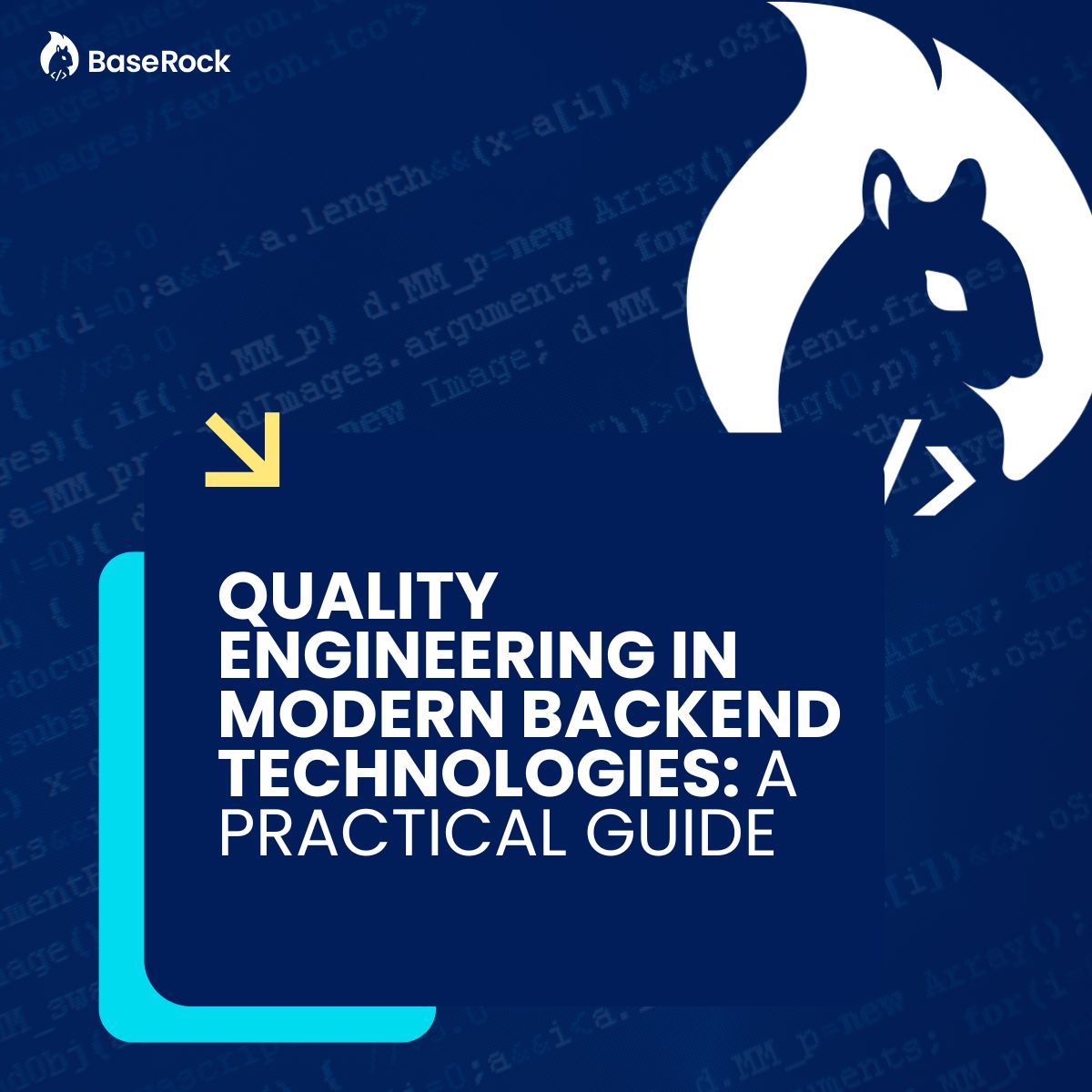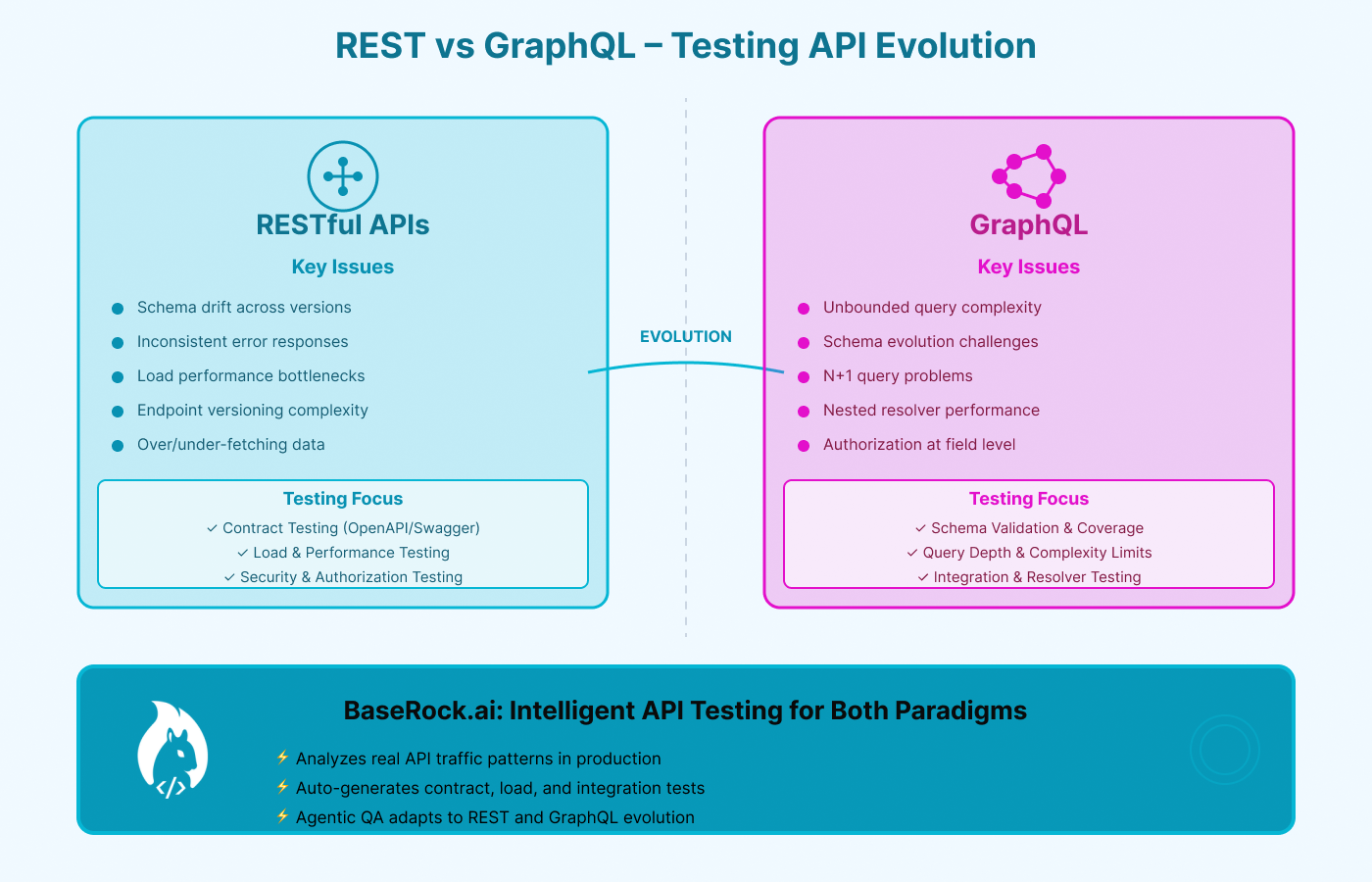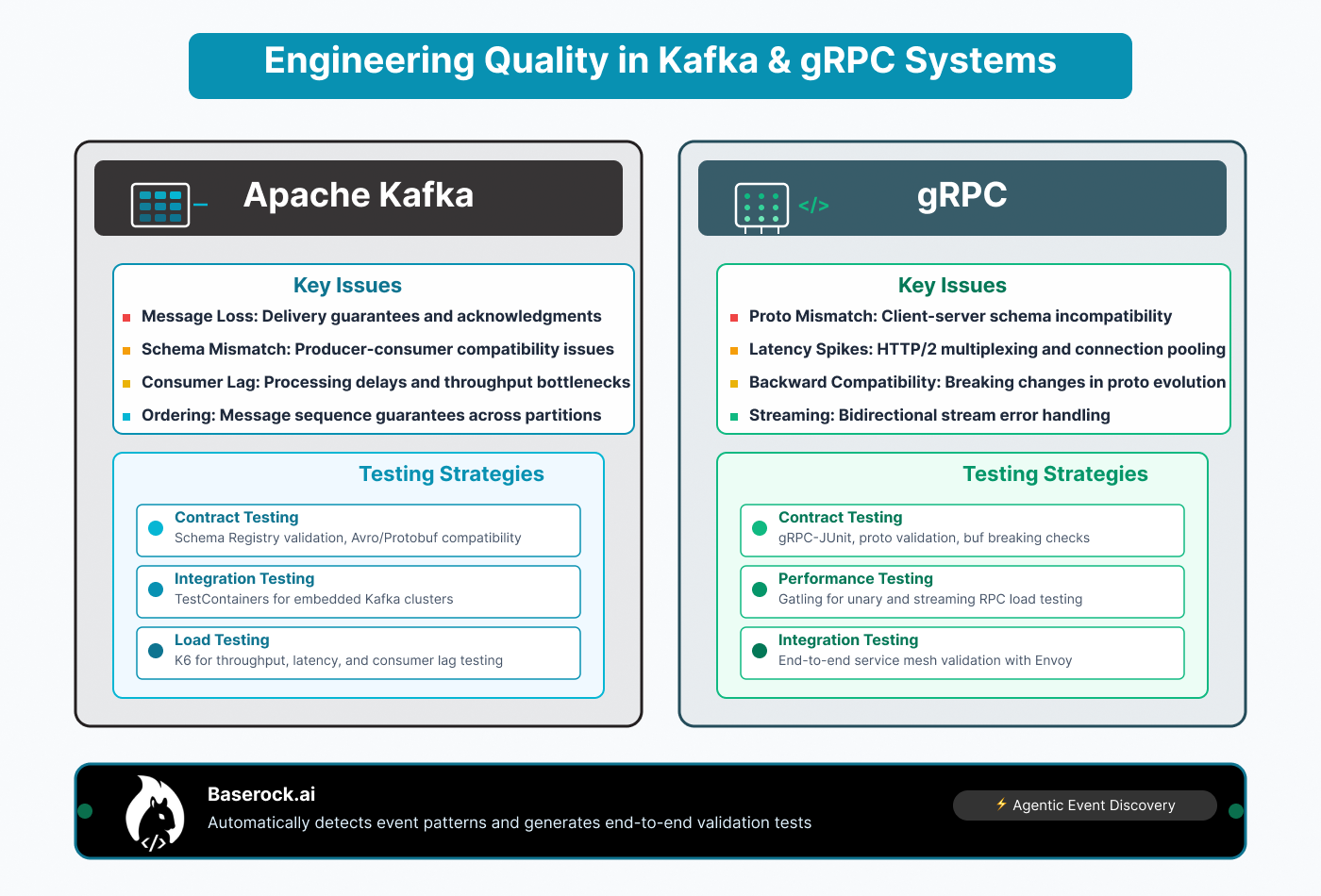
In today’s distributed software ecosystem, backend quality engineering goes far beyond checking if an API returns a 200 OK. Systems are now a complex mesh of RESTful APIs, GraphQL queries, gRPC services, Kafka streams, and WebSocket connections — all working together to deliver seamless experiences.
To ensure reliability, scalability, and resilience, testing must evolve to meet the complexity of these backend technologies.
Let’s explore how quality engineering applies to each, with actionable testing strategies and subtle examples of how intelligent platforms like Baserock.ai can make the process smarter and faster.

REST APIs form the foundation of most client-server communication. While conceptually simple, they carry heavy testing responsibility — contract validation, schema integrity, and performance under real traffic loads.
Typical issues:
Testing strategies:
Pseudo-snippet example:
@Test
void shouldCreateAndFetchCustomerSuccessfully() {
given()
.contentType("application/json")
.body("""
{
"name": "Alicia Grey",
"email": "alicia@example.com",
"tier": "PREMIUM"
}
""")
.when()
.post("/api/customers")
.then()
.statusCode(201)
.body("email", equalTo("alicia@example.com"));
given()
.when()
.get("/api/customers?tier=PREMIUM")
.then()
.statusCode(200)
.body("size()", greaterThan(0));
}
This test ensures that the customer creation endpoint not only functions correctly but also integrates with subsequent retrieval endpoints — a common blind spot in isolated API testing.
Platforms like Baserock.ai can go beyond such isolated tests by analyzing real traffic and automatically generating equivalent synthetic tests that continuously validate your API contracts across builds.
GraphQL brings the advantage of fetching exactly what clients need, but that flexibility introduces new testing dimensions.
Common pitfalls:
Testing strategies:
Testing GraphQL isn’t about single queries — it’s about validating end-to-end query chains and ensuring the schema evolves safely. Integrating tools that analyze live API traffic, such as Baserock.ai, can identify untested or under-used queries and auto-generate corresponding regression tests.

Kafka powers the event-driven core of modern microservices. Quality engineering here focuses on message reliability, order, schema, and processing correctness. Drawing inspiration from enterprise-grade test suites (like the one you’d use internally), here’s how to structure Kafka validation.
Typical issues:
Testing strategies:
Example pseudo-test (conceptual):
@Test
void shouldProcessTransactionEventEndToEnd() {
// Given: a new transaction event is published
TransactionEvent event = new TransactionEvent("TXN-10045", 480.75, "USD");
kafkaTemplate.send("transactions-topic", event);
// When: the consumer processes and emits balance update
ConsumerRecord<String, BalanceEvent> record =
kafkaConsumer.poll(Duration.ofSeconds(5))
.records("balance-updates")
.iterator().next();
// Then: validate transformation correctness
assertEquals("TXN-10045", record.value().getTransactionId());
assertTrue(record.value().getNewBalance() > 0);
}
This test validates a complete event lifecycle — from production to consumption to transformation.
Automated platforms like Baserock.ai can detect Kafka topics and message patterns automatically from runtime traces, then auto-generate similar validation tests — drastically cutting setup time in microservice-heavy architectures.
gRPC uses protocol buffers and binary transport, making it highly efficient but harder to test manually.
Common pitfalls:
Testing strategies:
Quality engineers should also version .proto definitions and integrate compatibility checks in CI to prevent silent contract regressions.
WebSockets enable real-time bi-directional communication. Unlike REST, connections persist — meaning you test not just endpoints but behaviors over time.
Typical issues:
Testing strategies:
For organizations with hybrid APIs (REST + WebSockets), automated observability tools like Baserock.ai can replay end-to-end sessions — including both synchronous and real-time events — ensuring consistent coverage without manual setup.
Quality engineering today isn’t about writing more test cases — it’s about engineering smarter, adaptive validation across diverse backends. REST, GraphQL, Kafka, gRPC, and WebSockets each bring unique testing challenges, but the goal remains the same: deliver reliability at scale. By combining structured testing strategies with intelligent automation tools like Baserock.ai, engineering leaders can unify their test coverage, close hidden quality gaps, and confidently ship resilient, production-ready systems.
Flexible deployment - Self hosted or on BaseRock Cloud